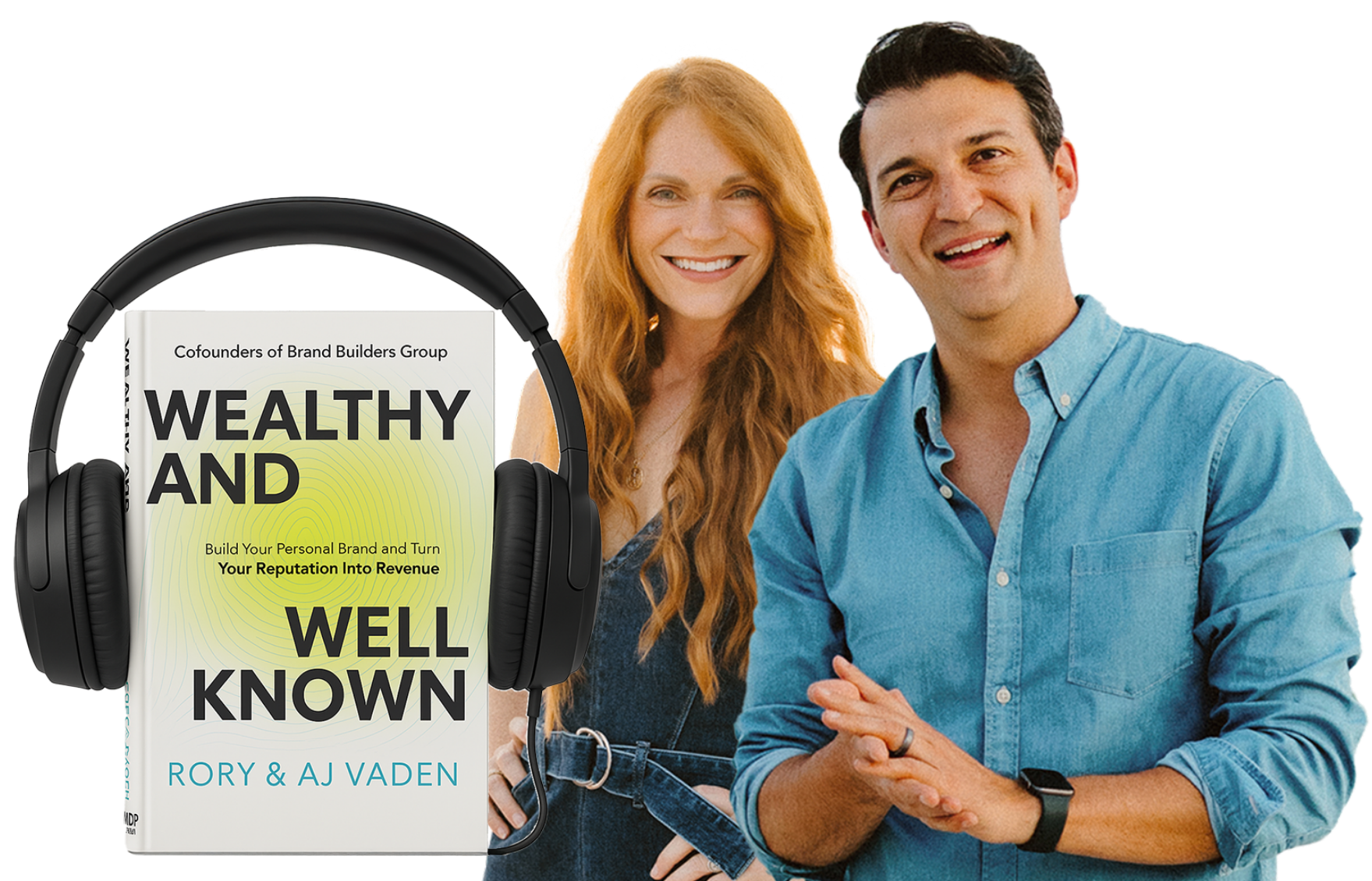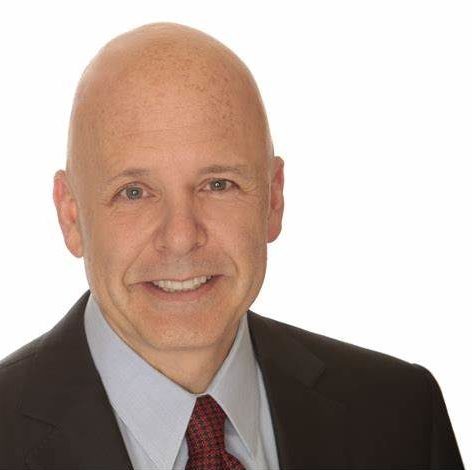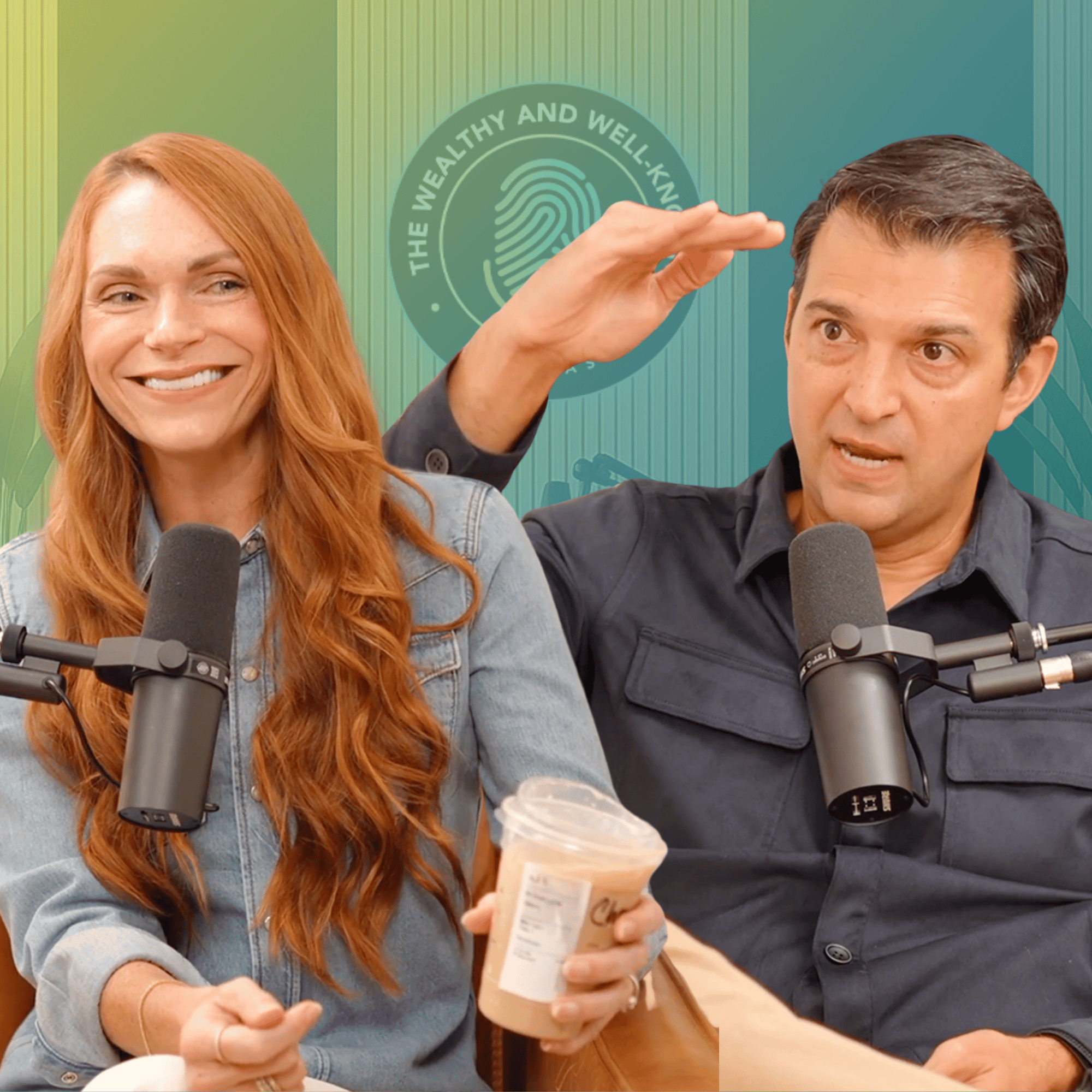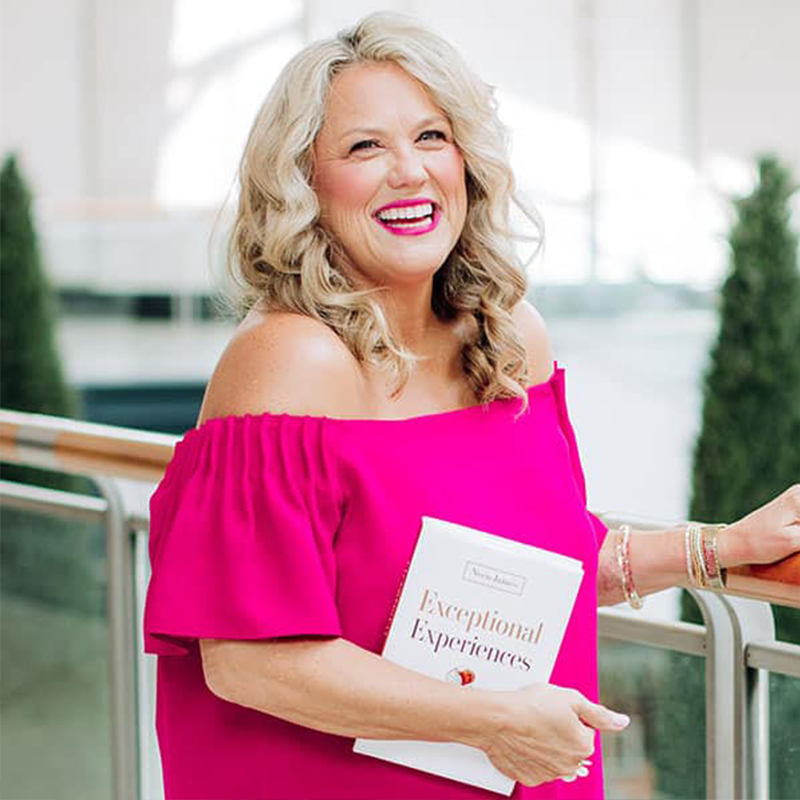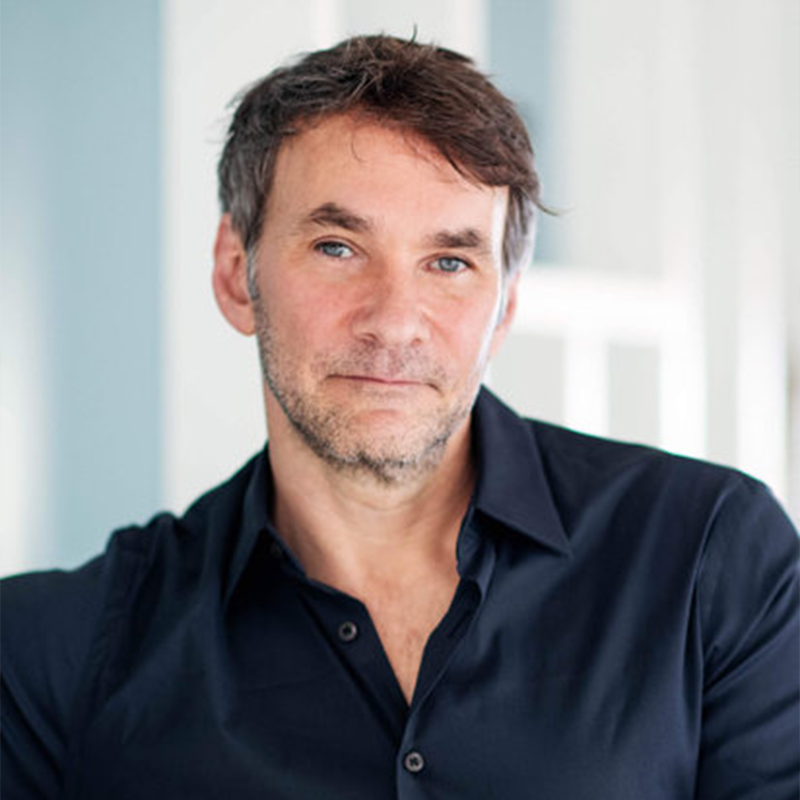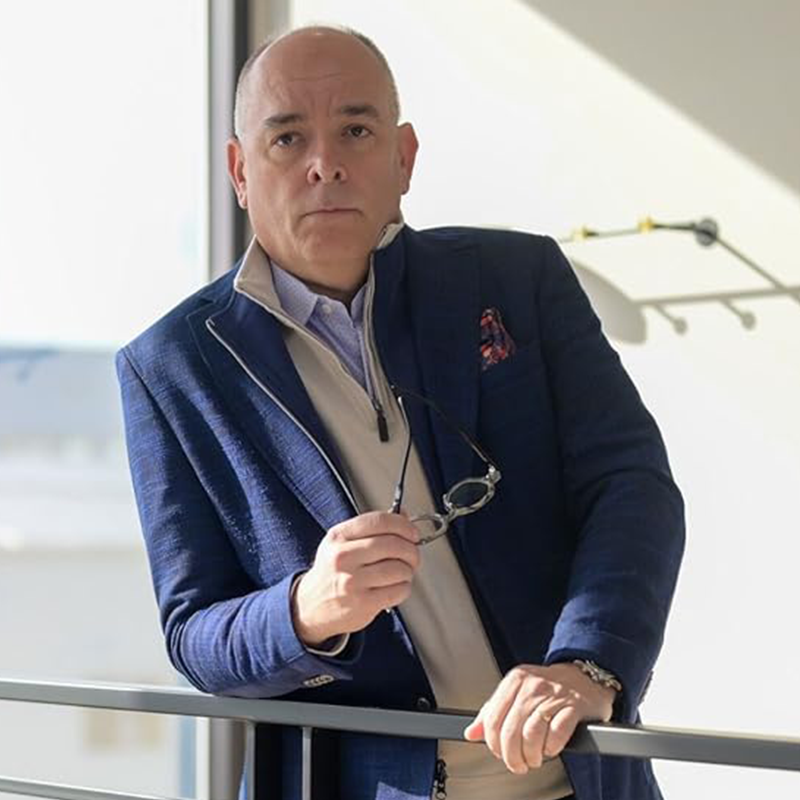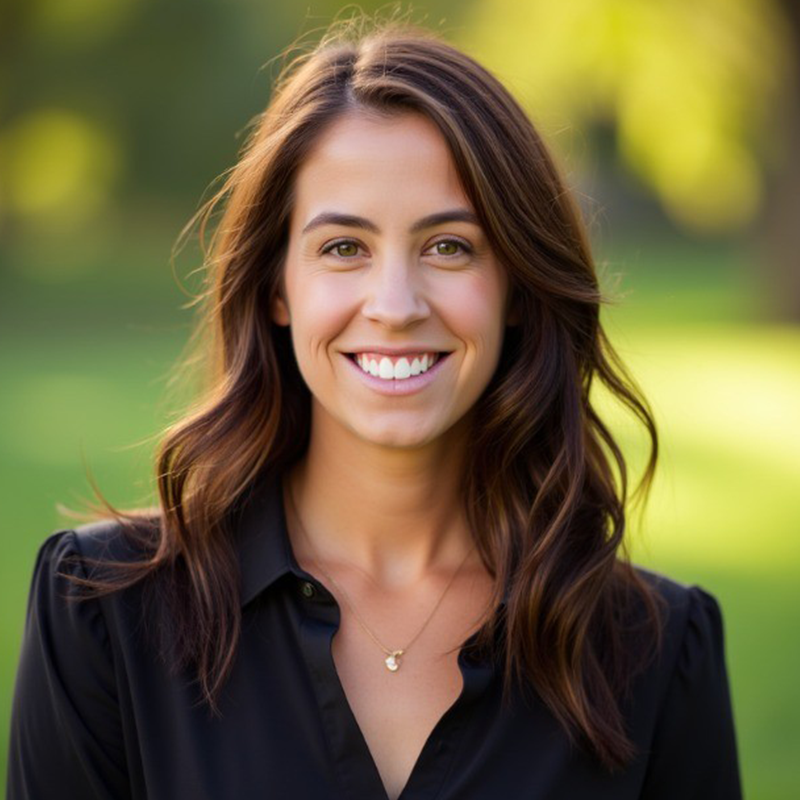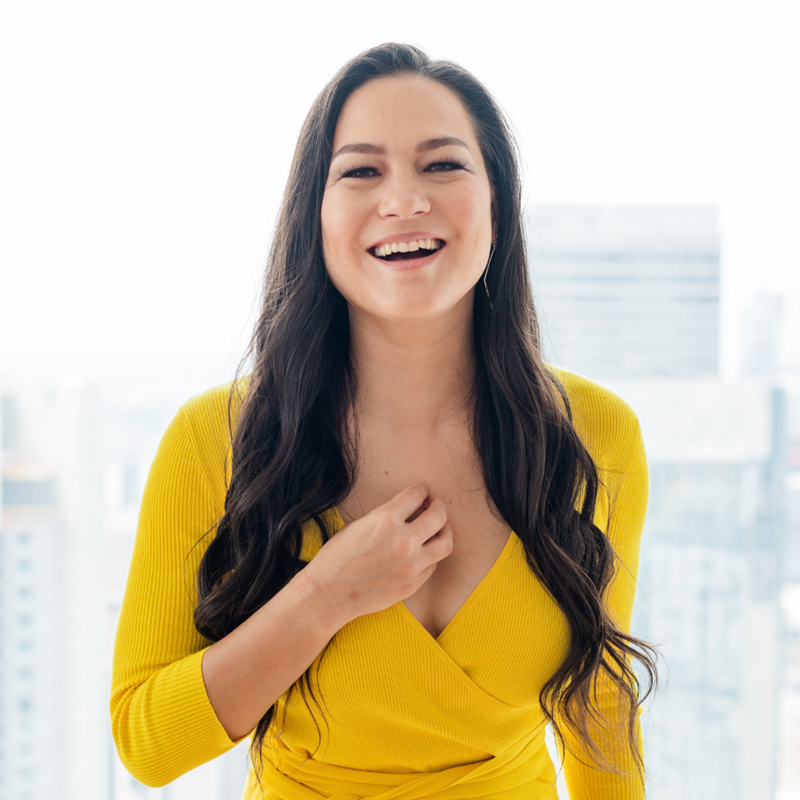RV (00:07):
Hey, brand builder, Rory Vaden here. Thank you so much for taking the time to check out this interview as always, it’s our honor to provide it to you for free and wanted to let you know there’s no big sales pitch or anything coming at the end. However, if you are someone who is looking to build and monetize your personal brand, we would love to talk to you and get to know you a little bit and hear about some of your dreams and visions and share with you a little bit about what we’re up to see if we might be a fit. So if you’re interested in a free strategy call with someone from our team, we would love to hear from you. You can do that at brand builders, group.com/pod call brand builders, group.com/pod call. We hope to talk to you soon. I love
RV (00:55):
When I get to introduce, to introduce you to some of my long lifetime or career long friends, and that’s what we get to do today with Shep Hyken Shep is one of those people who is amazing. And he truly is out there as a leader in his niche and his vertical and this entire industry. And a lot of people say, they’re speakers. And I know if they’re really speakers by whether or not I speak on the same stages with them. If I lose events to them, if I say, who did you have last year? And Shep is one of those guys where it’s like, oh yeah, we’ve had Shep. We’ve had him. We loved him. He’s here next year. Dah, dah, dah, dah. So he is a, in the professional speaking hall of fame. He is also a New York times and wall street journal, bestselling author.
RV (01:40):
He is a customer service and customer experience expert. And this is the author of several books moments of magic to a loyal customer, the cult of the customer several others. And anyways, we’re his here gonna share some war stories about how do you actually build a real speaking career? How do you, how do you actually sell, write and sell books? And and then also I think, how do we create a better customer experience as speakers, authors, coaches, financial advisers, small business owners, let’s call it for our customers. So anyway, Shep, welcome to the show, man.
SH (02:17):
Hey man, it is so great to be here, Rory. You’re awesome. I’ve known you for, I’ve known you for years. Many, many years. I was a kid. I was like, you were in the program when I first met, you know, you were running.
RV (02:31):
I was a volunteer that I was, I was, I was I think the first year I met you, I was the chair of the youth program because Eric Chester was like, you know, leading the thing or sometimes I got volunteered through it. But anyways man. Yeah. It’s, it’s great. So, and I would love to hear about your start to little bit. I think that would be helpful. You know, people hear these terms, New York times, best-selling author hall of fame speaker. Right. And it’s like, well, It happens overnight, right? Yeah.
SH (03:00):
It takes 20 years for it to happen overnight, but it happens. Yeah.
RV (03:04):
So how did you get, how did You get started? Like how did you get your first gigs? Like what did you charge? And you know, like in the very beginning, how did it come together?
SH (03:13):
I’m going to tell you everything, nothing will be held back. I’m going to speak a hundred percent from experience, no opinion. I want to give you data and information and if it works for you fine or not fine, if it doesn’t, but it worked for me or if it didn’t work for me, I’ll tell you that as well. So I’ve been doing this for quite a while. I don’t have gray hair that you can see, but 1983 was the year that I started my business less than a year out of college. And what had happened is go back gosh, 10 years, even before I graduated college, I was about 12. I started a birthday party magic show business. And from there I grew into working in nightclubs and eventually corporate events and other types of private parties, maybe for adult parties. But the point is, is I had a background in performing.
SH (03:59):
Now. All that meant is when I saw a couple of motivational speakers shortly, like I say, less than a year out of college, I thought I could do that. I, I, I don’t stage before. I, I, I, I think I could do that now. I just have to something I have to write about something and I don’t know what it’s going to be yet. And, and so understand that my parents taught me some great customer service skills when I was younger, like saying thank you, calling people up and asking them how they liked the show and getting specific feedback to make the show better. And I had no idea that was all about customer appreciation, process improvement, getting feedback, but that those are tenants of customer service. So I saw Zig Ziglar and Tom Hopkins and we all made, I hope most of us know who they are Zig since passed away, but Tom’s actually out there still kicking.
SH (04:46):
And I bought two items that night. I bought a set of audio cassette tapes and some of your audiences too young to know what that is. And there were eight of them. It was called see with the top, it was total motivation goal setting. I also bought a book how to master the art of selling. And I believe it’s still available today. And I read that book in about three days and I listened to those tapes over and over again, over the next maybe three, four or five days, I was immersing myself in Zig Ziglar and Tom Hopkins. And I went to the bookstore and I bought every, I went and I said, what am I interested in? I bought like three or four books in the entire, the entire bookstore business section was maybe six feet. It’s one shelf. That was it. There wasn’t racks and racks of books.
SH (05:32):
And I was drawn to the customer service experience books. So that’s how I decided I wanted to do this. And that’s how I, I kind of chose my topic at 22. You’re like early twenties, actually 22. When I saw them, I might, I did had just turned 23 when I started my business. Okay. And when I graduated college, I was asked to go to work for the family business, which they own gas stations and they own I mean, it was a small chain of station, so it was kind of a cool job. And I would go from station to station, a little dirty, getting, doing audits, going out in the, you know, checking the tanks and all that with the meter stick anyway base that was in June when I started full-time and in September they said, Hey, we’re selling the company.
SH (06:18):
I went, what am I supposed to do now? So I stayed with it for a short time as they won some things down. But that was it. I mean, a few months later I’m without a job, but that’s okay. I mean, I never really thought anything of it. I just thought this is all part of life and this is what you have to do. So when I went to the bookstore, I’m attracted to like in search of excellence from Tom Peters. And I believe Waterman is his name. And then I saw a couple of books by Ron Zemsky and Carl Albrecht on customer service. So I bought these books, read them. I said, this is it. And how am I going to get clients? And this is to your point, this is how I really got started. I went to the bookstore, I mean, to the magazine store.
SH (06:55):
And I bought every magazine. That was a business magazine, which was like, you know, there weren’t that many, I can’t remember what they were business. We, whenever they were, if they had a full page ad, I thought they’re big enough to be selling something. They probably got a Salesforce. Then maybe they need a speaker. And always the phone number was never the right phone number, take it to headquarters. It was like a call center. I went to the library. There was no internet back then. Remember you wouldn’t remember, you weren’t even born back then,
RV (07:25):
Were you? I was born in 82. So I was [inaudible]. I’ve
Speaker 5 (07:32):
Been in business almost as long as you are. That’s
RV (07:35):
Right. That’s right.
SH (07:38):
Anyway, I tore out all the full page ads. I went to the library and they had these directories. Some of them were on microfiche. Some of them were actually in big volumes of books that I can open up and find out who the current president C you know, executive VP of marketing, you know, all of the salespeople
RV (07:56):
To get clients, but you looked at it as like they’re advertising for, for them to become a client of yours. I love this. So you look them up and you’re like, this company must have some money. And so you, and so you look up their contact information every day and you could
SH (08:11):
See their sales and, and it was, you know, so I went to these directories and I made this list. I call it the target 100 and I made a list of a hundred companies. And I said and by the way, it took me, I don’t know, month and a half to go through. Because even though I said, I’m going to make 20 calls a day. You might only reach two or three people. And there was voicemail. There was no email. It was just, it was, it was, and I put everything in little file cards and I had my little tickler file and
RV (08:40):
CRM,
SH (08:41):
Like, yeah. So there wasn’t such a thing as CRM. Now I did get my first computer. One of my clients was Epson EPS. When they make printer, they also made computers and I, the guy wanted me to do a regional sales. So I went and did the meeting in exchange for expenses and a computer. And I remember my, my first database was floppy disks. All of the A’s were on this disc. The B’s were on this, this, this, oh, wow. Yeah. And so
RV (09:12):
Sorry. So you just called these people up and, and you said, you just said, Hey, I’m a speaker. And you just said, I’m a speaker. I speak on customer experience. And, and, and then you just, and they said, what’s your fee. And you just gave him some number and that’s how you start
SH (09:29):
It. And I don’t mind, you know, I share, I would tell you, I would share my number. It was $500 for a speech. And my goal was in 1983. Remember I’m only 22, just turning 23 if at the end of the year. So this is about, I would say the official start date of my business was I mean, I ramped up a little bit. I had everything ready to go, but August 1st was doors open. Yeah. And so for the next five months, my goal was to get at least two speeches. That would be a thousand dollars a month. I remember my living expenses with apartment and utilities room and board was about 11 or 1200 bucks a month. I had some money in the bank, not a lot. I said, but if I could make a thousand a month, I can make it through this year.
SH (10:12):
If I could make 2000 a month by next year, I’m in the profit zone. And I wanted to double every year. So I learned this from Zig. I created a ten-year plan from age 23, the age 32. Okay. And I hit that plan at around age. I’m going to say right around age 30 or so, I hit my mark five or six years. Yeah, well maybe more like eight, eight years, but it took eight years to where I’m ma so I had a thousand, 2,004,000, so 4,000 and then 8,000. And so it’s like, then I got a hundred thousand gross than a hundred thousand net. And then eventually my goal was a quarter of a million a year in income. And then when I hit that, I had to reset my goals. So that took me to age just under age 40. So now I had a goal for my next decade of my life.
SH (11:01):
And by the time I hit age 40, my goals were starting to change from 100% financial to lifestyle mixed with financial. I even had my wife tell me one day, chef, you’re doing really well. You’re working so hard. You’re never home. And one day you’re going to come home and nobody’s going to be here. The house will be empty. There will be no furniture and you will be on your own. And that was a big eye-opening, you know, whoa. I need to get some balance in my life because I was churning and burning. And but the part I was burning was my life was my personal
RV (11:36):
And all of this just comes from basically finding people that have meetings, contacting them, letting them know that you’re available to speak on X topic, which has not changed. Like it has not changed in 50 years. It’s, it’s, it’s the same thing now where you doing some speeches for free early on?
SH (11:58):
I, you know, I $500. It’s almost for free. Yeah. But, but I would do anything. I mean, it wouldn’t
RV (12:05):
Be considered that today, but back then, I mean, 500 bucks was still like $500,
SH (12:10):
Like making 1200 or 1500.
RV (12:12):
I mean, it’s still something. Yeah.
SH (12:14):
Yeah. And so yeah, the short answer is yes, I would do free. So between 1983 and 1988, I was really rogue on my own, no support. Nobody told me what to do about anything I had. I had found Dottie Walters, which is a name from the past, which you may or may not know. She was very involved in the national speakers association. She had a speakers bureau and she had a directory of other speaker bureaus. And somehow another, I came across her publication. So I bought her book. And so I was learning about the industry, but I was really out on my own, but in 88 I joined the national speakers association. And this is a, this is definitely a plug for NSA national speakers association in that even if you’re a coach, a consultant, even an accountant or a lawyer, if you go with the idea that all you’re going to do is learn how speakers market themselves. It’s the exact same way that every what I would call entrepreneurial and for lack of a better term, I’ll call it a practice type of business would market themselves. Yeah. There’s a lot of advantage there. Right. Anyway. And I would
RV (13:20):
Say too, when we, we S we talk about this a lot, that both, whether you’re cause a lot of our clients are financial advisors, they are accountants, they’re lawyers, they’re chiropractors, they’re whatever is that. And, and as a speaker cause, cause, cause our story about how we started would be very similar. We called out of the phone book, the yellow pages phone book, and we went and spoke for free. But even to this day, the fastest way to take, we tell, we say to clients the fastest way to go from being a stranger to a lifelong fan is a one hour presentation. And so if you just go deliver, I mean, in financial services, they call this the like dinner seminars they’ve been doing that for decades. It’s still work.
SH (14:04):
It does. And you know what, if so over the years a transition from me making those calls to my assistant, making most of those calls doing nothing, the only people I would talk to is if it was set up in advance is an appointment to talk to someone. Not because I’m a that was just seemed to be like, it’s hard to not know because
RV (14:24):
You’re a prima Donna, even though you are, but that’s not why
Speaker 5 (14:28):
You did it that way. It’s not because it’s
SH (14:30):
The same way. Right? It’s positioning you, you know, the guy who’s groveling for money is probably not the expert you want to hire well and it saves you time. Yeah. And, and you know, it was, it was efficient by the way, in the beginning, when I didn’t have an assistant, I just doing this on my own. I would be really, really busy and then nothing. So what did I do here? And that nothing time I would get back the phone and smile and dial, and then I get really busy again. And then when that war wore off, because I couldn’t make phone calls and it was really hard to, to stay and do calls from on the road compared to what you do today. You can’t, we didn’t have a cell phone back then. So anyway, what happened over time is yes. I transitioned to my assistant making most of those calls today.
SH (15:13):
It’s a little different. I mean, my business today is tons of word of mouth. I am, I don’t consider myself just a speaker. If you ask me on the airplane, what I do for a living, I’m not going to say I’m a professional speaker who, you know, but we can get, well, what did you say? I w well, I would ask you a question. Have you ever walked away from a business or gotten off the phone and you thought, wow, that was an incredible experience. That was amazing. Those people are just unbelievable. And of course, you’re going to say, yeah, I go, well, that’s what I help my clients achieve. And it begs for how do you do that? And I said, well I actually write books and hundreds of articles on customer service and experience and companies hire me either to speak at their events, industry events, corporate events, or my trainers go out and deliver training. We have online on demand, virtual video based training, you know? So then we get into the how tos, but we want to set up like, yeah, I totally understand what that concept is before we get into how I do it. But I love that guy. That’s a cool, I love
RV (16:14):
That of going to the average person on an airplane. If you say a speaker, they go, oh, that’s cool. And they would be like, I can never hire you. I don’t know anyone who needs like, but if you go this amazing customer experience and they would go, you should work with my friend. Cause they S they suck. Or you, you would like these people because they really like, you know, customer experience. That’s great winds up
SH (16:35):
A conversation as opposed to a, because sometimes, oh, I’m a professional speaker. Okay. I don’t even know exactly what that is, but it sounds good. And I’m just going to start reading my book again. And by the way, I prefer if they would read their book and that just all
RV (16:49):
You have to do is tell them you’re a pastor or you sell insurance. Or if you say like, Hey, I, I raised money for political foundation. Then they stopped talking
SH (16:58):
To you. There you go. And we won’t say which one, if we can find out who they love, then we go the opposite direction, no matter who it is. So I can be conservative. I can be liberal, whatever it takes to get them to leave me alone. So, but all kidding aside today I’d even said it, you know, we’re coming out of the pandemic, right? And we need to spend more time doing the direct interaction we need to get back in front of our clients. That’s not going to happen by hoping the phone’s going to ring. It’s going to happen because we’re emailing more. We’re going on. Linkedin. We’re finding people that whose titles and their companies match up with my criteria. We’re asking them, Hey, we’re just connecting with people that you think would be interested in my content, you know, or you and I were talking about our annual reports that we’ve created from studies, by looking at different parts of the population.
SH (17:52):
Mine is on customer service and experience. So last year we created the achieving customer amazement report. And we went out and did a study of a thousand consumers, you know, weighted to the census of the U S and we’ve got great insights. That’s what we send to our potential clients. They go, wow, this is pretty interesting. What would you like to talk about it and how it applies to your business? No charge. I would just like to learn what you do. You learn what I do, and maybe we work together. Maybe we don’t, it doesn’t matter, but we’re all friends when it’s over. And the LinkedIn is the new telephone. And it’s great because it seems like the response, first of all, you can send out a lot more queries through LinkedIn or, or make more potential connections. The percentage of getting responses are much higher, you know, based on the effort you put in, I might make a hundred calls in a week.
SH (18:40):
And I’m lucky if I talked to 10 or 12 people, and I’m lucky if it goes 12 people, maybe one of them, maybe two could be interested. And if I can amass a group of about 20 people that might turn into one or two speeches of those people that are really interested. So I actually had, at one point we tracked every number and that’s so important to track what works and what doesn’t work. So as I learned from going to the national speakers association conferences, when I make those calls, there are certain questions that I want to ask that qualify them for me. Now, I got to know my industry pretty well. So I would ask, do you hire professional speakers? And if they say, no, what’s a professional speaker, then we know they’ve not paid for one. I’m happy to explain it to them, but I’m very quick to get off the phone because I don’t want to make a two-step process in the sale. I don’t want to convince them they need to spend money and then convince them it’s me. They need to spend, I just want to find out if they go, yeah, we’ve hired speakers. Well, tell me who you’ve hired. And sometimes they’ll tell me, well, we brought in our best customers. Well, that’s not a professional speaker, but if they say, yeah, we brought in Rory Vaden, or we brought in, you know Scott McCain or Jay Baer, all my friends, I knew
RV (19:52):
Awesome. They got at least 500 bucks. If they’re bringing, if they’re pulling in those guys, they got at least 500 bucks,
SH (19:59):
Right? So, I mean, the time I got to NSA, true story, I was charging a thousand to $1,200 a speech in 1988. And when I joined NSA. So you remember I did magic as a background. I was still doing some magic shows, but I said to myself, as long as they’ll pay me the same thing as it is to speak, I’m happy to do that magic show. So for a thousand dollars, that’s a great gig for a magician. But as my fees started to go up, not a lot of people willing to pay a thousand bucks for a magic show. So I, when I joined NSA, I found a mentor. His name was Phil Wexler, still around, just as birthday, the other day, same as mine and Phil. I went and we did it. I recommended him for some speeches. And he said he was going to send me a commission.
SH (20:45):
And he owed me quite a bit of money. And it isn’t like he owed me money, but he would have paid me that money. But I said, before you write the check and send it to me, would you keep it? But I want a day of your time. I flew out to San Diego. I spent an entire day with him. And when I came back, I tripled my fee. I said, no more magic shows. And I became laser focused on just what I wanted to be hired to do. Now, could that have happened a year or two earlier? Sure. But it doesn’t matter. I was doing pretty well. Anyway. I was booking 150 dates a year. Things were good and I was making a thousand, 1200 bucks a speech. So I went up to 3,500 and never looked back. It was a little scary right away because I lost all of these clients that were used to paying me lower amounts of money.
SH (21:30):
But with by the middle to three quarters of the end of the year, I was making a gross wise as much I’d made the following year. And of course, you know, now we’re, we’re in that sequence. So it worked out real well. But the point is, that’s what I did to get started today. It’s, it’s content marketing. I really think of myself more of a media company than I do a professional speaker. And I do have a business versus a practice. Now, the speaking is like a practice. If I don’t speak, I’m not getting paid, but I’ve got trainers out there delivering my content. We’ve got influencer activity where I’m hired for several months to tweet, write articles. You know, we’ve got all kinds of, I have seven different streams of income that help offset, you know, areas that might get hit hard by a pandemic or by an economic downturn. Yeah.
RV (22:25):
Well, and I think it’s just an interesting shift in general. Like, you start out going, Hey, I want to be a speaker and you, you and I have this in common. I think there’s less and less people today. Maybe not, maybe that’s not right to say, but it’s not like, oh, I want to be a speaker anyways, you and I started going, I want to be a speaker. And then it kind of has it evolves to more of like, I’m not marketing myself as a speaker, I’m marketing my expertise of which I can deliver that to you in a variety of different mechanisms or mediums or, or outlets. And do you think that’s a necessary evolution that that happens or do you think there’s power in just going, Hey, if you want to be a speaker, just market yourself as a speaker, go knock that down. And just, that is what, you know, that’s what you deliver and that’s, that’s the only thing you do.
SH (23:16):
So a great question. And I think the answer really lies in what you want and where you are in your career. If you are an executive who worked as a high level executive fortune 100 company, and you’re at about age 55 or 60 and ready to hang it up whoever that executive is, he, or she might say, I had a lot of experience. People are willing to pay a lot for that. I’m done with the corporate world. I’m going to just go out. And this is kind of like my retirement you career, then it’s okay to have that practice. And I’m totally cool with that. You may be in that world where you’re, this is what you love more than anything. And I say, go for what you love. And if you can make a living at what you love and you actually have stability in it.
SH (24:00):
Great. What concerned me is that I know we’re not invincible, so you always have to worry about, am I properly insured either through life insurance, health insurance, you know, business interruptions, insurance, that kind of thing. But you also need to realize that, you know, you’re not in control of, you know, a pandemic shut people down for a year. You know, I know people that had the leave, the speaking business because they never did. I thought they were successful, but they didn’t save anything. And they weren’t prepared for a downturn. Well, maybe they think, oh, how long could it last two or three months? I was kind of thinking we’d be back in March. Oh, well you backed by September. Right? I didn’t realize it would be September 20, 22, right. Or whatever it is when he went. But anyway, I digress. So to your point, the question is where do you want to go first, 2000 nine 11, 2001.
SH (24:55):
Was it, was it? Yeah. And when nine 11 hit nine 11, 2001. Yep. Yeah. So in December of that year, I’d already signed up to spend the weekend with needle Cobain. We all know Nieto in this, our industry, he’s a guru. And one of the exercises he had us do is an amusement park exercise. And he says, draw your business. Like it’s an amusement park. Now I started in 1983. This is 17, 18 years later. Right. My amusement park, I thought of it in terms of like six flags. There’s that big stage, the main stage where they had that show. And then as you walked out, there’s a gift shop kind of like even going to a Disney, you know, going on the ride and then you have the little gift shop. And then my amusement park had nothing else around it that was in the parking lot.
SH (25:38):
But then I looked to the guy next to me and he was drawing an attraction here in the corner. And another one, I go, what is that? He goes, this is a mastermind group that I put together of my top clients. This over here is a membership group. I created that has, you know, 500 members that are paying me X number of dollars a month. And he had these four or five attractions. And I looked to the guy next to me, same kind of thing I want, okay, what are they doing? They’re bulletproofing themselves from having this as part of their business being wiped out because they have other areas. So I quickly pivoted, if you will, I hate that word because like you turned your back, but I was flexible. That’s the word I showed flexibility. And that I said, I know what I’ll do.
SH (26:20):
I’m going to create a training program from my speaking. By that time I’d written no, maybe two, three books. And so I went to a course designer. I found a freelancer and for about 3000 bucks, maybe 3,500 bucks a week, much more than that. They wrote my training for a two hour, half day full day and gave me ideas for multiple day programs. And then I went out and did my first full day training program. I hated it. It was like, I got to talk for a little bit. Then I have to let them work. And then I got to listen to a lot more that keynoter. But the brilliant thing was I started hiring other people to deliver this content because it was written with the idea that a person who could just pick up a facilitator guide, study it and go do it if they knew what they were doing.
SH (27:04):
And that started the second phase of my business because we were in my mind, one terrorist attack away from the annihilation of being of going to a hotel to have a big meeting, because nobody was going to put their sales people on an airplane or send them to a hotel where, you know, somebody could detonate a bomb and wipe out their company. And I know that sounds morbid, but that was the way I was thinking one terrorist attack away from the end of my business. But as a trainer, I could send trainers to their offices. They could have a training room and my people could train their people. And that’s really what started the expansion of my business. So I, you know, what’s right. It just depends what you want to do, but realize as you get into business, you know, Rory asked me how many people I have working for me,
RV (27:51):
How many people you have working for you about half of them.
SH (27:56):
But seriously, when you want to get into doing this, you start to hire other people and you can hire freelancers, but you’re still hiring a force. And you want to try to, you have to keep motivated. You have to meet. It’s a totally different game. I enjoy that game. It’s fun to me. So that’s where I am today. We’ve evolved to I have seven ways that I make money speaking, sending out trainers on demand, video based training selling books when they come out, by the way, new book coming out, I’ll be back how to get your customers to come back again and again that’s book sales influencer role where companies now hire me just to have me tweet about them, write articles about them, because I’m considered a thought leader in my space after all these years sponsorship, if you go to my YouTube channel, you might see a little ad sponsored by whoever the company is. It’s sponsoring me that month. And we have them sponsor my blog, my YouTube channel, my podcast, et cetera, et cetera. And, and so we’ve got packages for that is that six. And then, oh, number seven is special projects. Like we’ll do special video projects or consulting type projects for companies. So interesting, but it started with
RV (29:07):
One, it started really as a speaker at the speech. And then, and then you, you expanded and turn that expertise into something else. Wow.
SH (29:15):
Well I love
RV (29:18):
That ship. I mean, this is, this is super interesting and I think powerful for anybody out there, you know, going okay, how do you get started? Cause to me, you know, you did this in 1983. You know, I would, I would say for me, I did this really, I feel like between 2006 and 2000 and, and maybe 12, 2 13, and there’s not that much difference. And there’s not that much difference from today. It’s like, you got to find some people who need what you have, let them know you have it and then do a really good job delivering it. And like was pretty much that’s all there is. And then you just do it over and over again. And then at some point you get other people to do it, to do that, to do all of those same parts. Yeah. If you want to, if you want to go that route. So it, I think it’s, it’s super encouraging. And yeah. I wonder where do you want people to go ship if they want to connect with you or like learn more of what you’re up to?
SH (30:17):
Sure. Go to hike and.com pretty easy. H Y K N. There’s lots of free resources. You know, I give away pretty much everything I have. From there you can find my YouTube channel, but it’s, you know, I have 600 videos on YouTube. People watch him chairman meetings. My goal is the more you give, the more you get, they come back and give you information, you know, book you to, to share their information.
RV (30:42):
Well, and I’m, I’m curious to know, okay, so what is you? We didn’t really get into the customer experience stuff too, too much. But what would you say is one great customer service tip that personal brands could do immediately just to like, whether it’s love on their clients or love on their team or like when you go, okay. When I think of like all the speakers, coaches, consultants, practices out there, this is like a small business tip that you go, oh my gosh, like, this is a, you could just do this right away and it’ll make a, make a huge difference in your, your expense.
SH (31:17):
Well, I’m going to give you three. One is kind of strategic and this must always happen. One is a bigger project and one is something you can do right away. And I’ll do them quickly recognize that every interaction that you have with the customers, an opportunity for them to form an impression about you. So manage that interaction. It’s called the moment of truth. I can go on and on about that one, but you get the ideas. You need to see what every interaction is now. That’s number one. Number two is how do you look for those interactions? Create a journey map of every interaction that your clients would have of you from the time they might see something in a website, search on Google to get to your website, how they get to you, you know, do they reach out to you via email phone and the whole plot, the entire process, all the way to where they book you, and then what happens after the booking or what happens, where they buy you or after the sale. And so that’s number two. And that journey, map process is going to take awhile because you think you got it. And then you’re gonna find more and more and more, every little tiny interaction counts. And number three, just return people’s emails and phone calls immediately. And you’ll see what a difference that makes you can do that. Starting this moment.
RV (32:29):
Huh. That’s funny. That’s a big one for AIG. She’s super big on responsiveness. Just even you let them know, Hey, I’ll get to you. Like I saw your email, I’ll get to it tomorrow. Like yeah.
SH (32:40):
You know, it’s holiday weekend. I’ll call you first thing Tuesday or Wednesday or whatever it is. Yeah. Which
RV (32:45):
Is interesting. Cause like, you know, I think of all the people we hire that are vendors, contractors for the house, for the business. And it’s like, the number one thing is like, are they staying in communication with us? So that’s really great. Well, hyken.com. Y’all we’ll put a link to that. You can follow him, get a lots of awe. I mean his, his depth of knowledge and expertise around the customer experience, you can see a super powerful chef. Thanks for sharing. What I think is probably the, not so often shared story about how you got started in this career and have built everything that you’ve become, man. We wish you all the best.
SH (33:17):
Thank you, sir. Great to be here.

